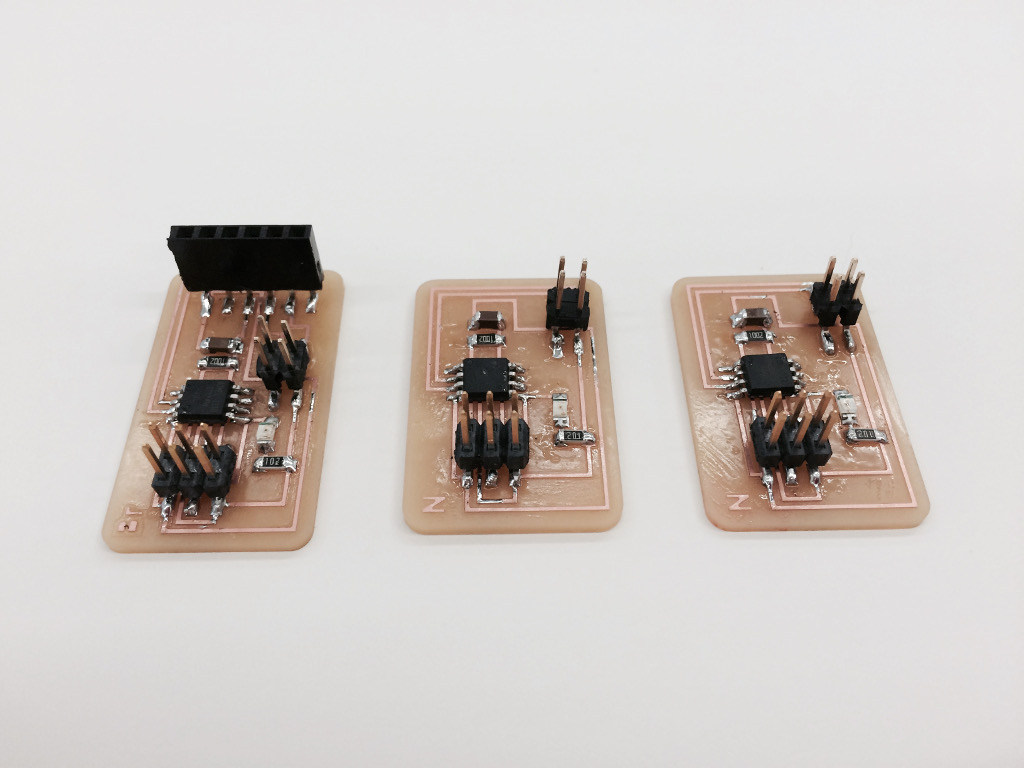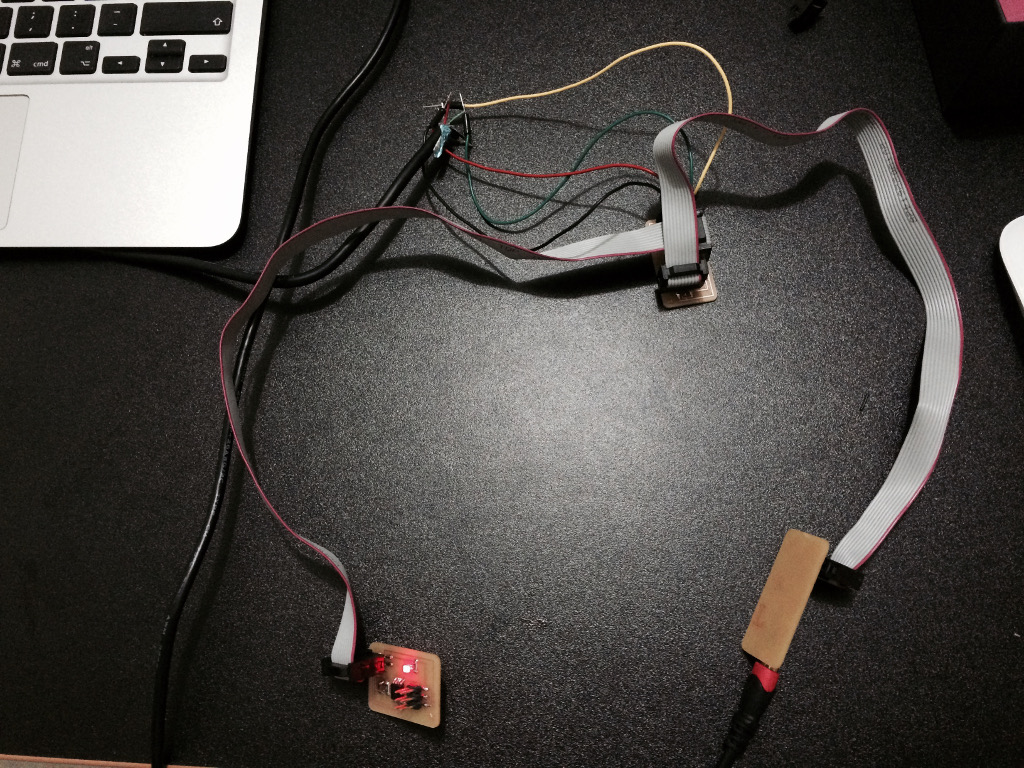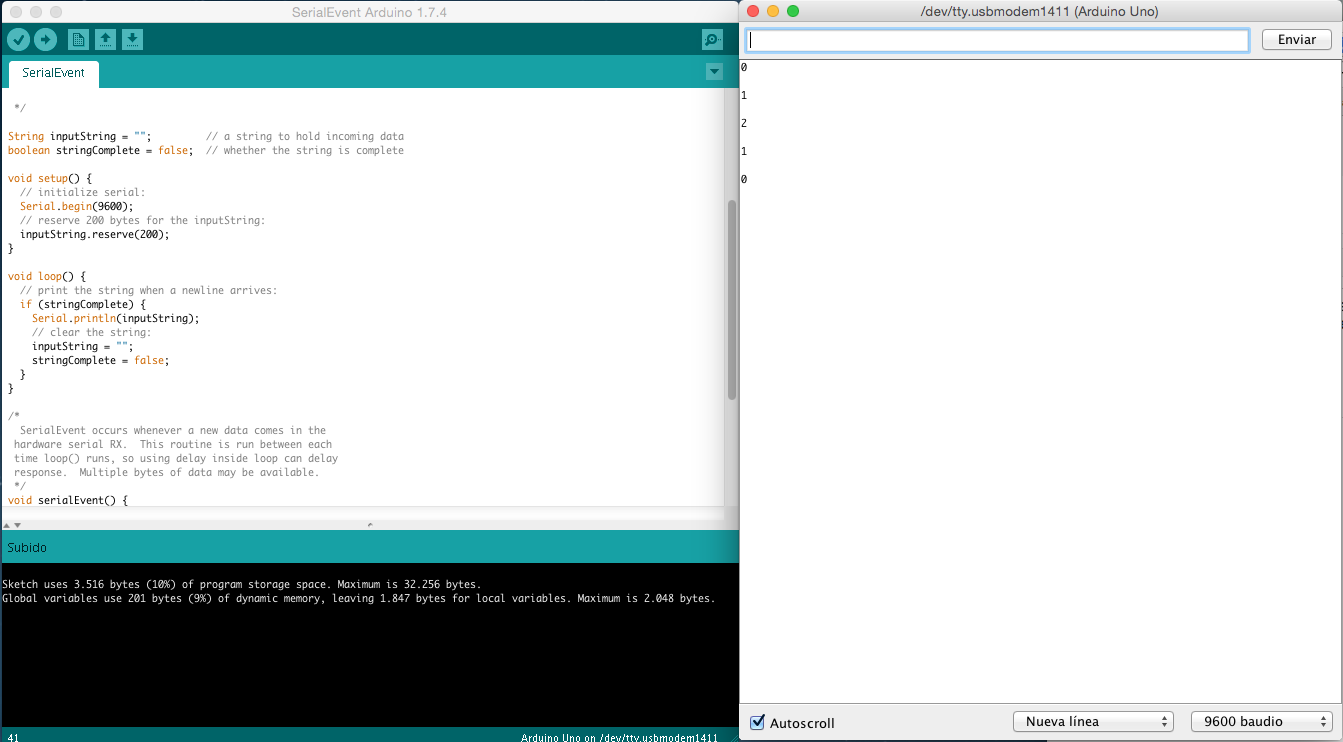fernando meneses
13_networking and communications
In this activity we will work with networks, wireline networks in my case, to start the PCB I will use Neil base, here a picture of the fabricated PCB.
First will schedule the bridge to 0 and then every node 1 and 2 is an example of connections.
To explore another programming technique, in this case the scan time ATtiny “AtmelStudio”. Here are the steps:
1. Open the AtmelStudio and find the menu “Tools”, then the option to “Programming devices”.
2. Here we have to select the type of driver, in our case is the AVRISPII.
3. After the device type is selected, in our case the ATtiny 45.
4. Select the interface type (in this case ISP) and apply.
5. After we choose to read, then we get a reading “signature device” and “target voltage”.
You have to have something, if you send an error message it is more likely to be an issue of connections, welding or voltage. I leave the batteries because the voltage was not too low or not very accurate, it is best to have a transformer.
If all goes well, then we have a lot of data on the device.
6. Among the most important data we have “fuse” recommend watching the calculation of the fuses on the Atmel page, in any case, since we here, Ask for the best editing and program the fuses.
program….
if all goes well, then we will receive … OK
7. To send data use the FabKit, with sample code “event series”, from here we can send data from the serial port
8. Here a video of the nodes in operation, sending 0, 1 and 2.
_conclusion
I think the network is a level above which the control of a sensor, it is a very powerful tool, now I want to explore more, specifically, there are some things that are not fully understood, for example, by accident connect the pin of the microprocessor “SCK “linked to the glass, and found that if crystals were connected to the other nodes, the code worked perfectly, now have to investigate further.
_file
SerialEvent.ino
_
Original source: http://academy.cba.mit.edu/classes/networking_communications/index.html
Contact: fernando.meneses@udem.edu / fernandomeneses@nodolab.com / f / in / g+ / b / v / mx / w



































